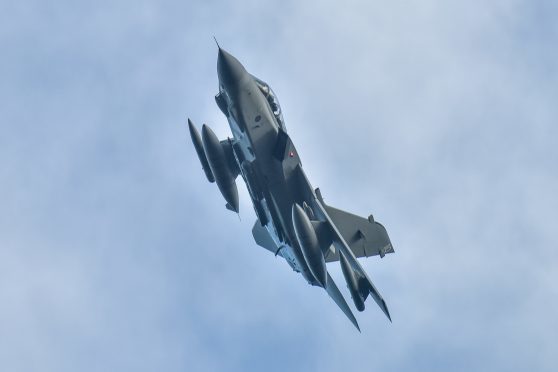Just six of the 10 RAF Tornado jets flying missions over Iraq and Syria are fitted with a collision warning system.
The Ministry of Defence has confirmed not all the jets operating in the airspace are equipped with Honeywell TCAS II.
Defence Minister Philip Dunne also revealed that those with it do not use it in “operational theatres” for security reasons.
The information was uncovered by the SNP’s Douglas Chapman, who raised the issue in a written parliamentary question.
The Fife MP, who sits on the Commons defence committee, also asked how many of the six Typhoons involved in operations there have the system, but the minister did not cover this in his reply.
Mr Chapman welcomed the news some of the aircraft are equipped, but he said many people would not be happy until it became a “standard feature” on all of the RAF’s fast jets.
He added: “The pilots and aircrew of the RAF are the best trained in the world and we must ensure that their ability to conduct operations in as safe and efficient a manner as possible is not compromised by failing to fit this essential piece of kit.”
Flight safety campaigners have repeatedly raised concerns over the absence of a collision warning system (CWS) in the Tornado and Typhoon fleet.
It was identified as a factor in the 2012 Tornados crash over the Moray Firth which killed three airmen.
A service inquiry into the incident made 42 recommendations, including the ongoing introduction of a CWS to Tornado GR4s as another tool for crew to use.
And earlier this year, Air Marshal Richard Garwood, then director general of the Military Aviation Authority, warned that Typhoons should be fitted with the system with “full haste”.
Retired RAF engineering officer and Forres resident Jimmy Jones, who has been campaigning on the issue, accused the MoD of “trying to play down the requirement”.
But an RAF source told the Press and Journal the introduction of a CWS was not and would never be a “panacea” for air collisions.
He said CWS only gave warnings when other aircraft were fitted with mode S transponders, which are not mandated on private or military aircraft.
A “multi-layered approach” was required, he added, highlighting the de-confliction planning process which “couldn’t be more comprehensive”.
He also dismissed the claim the “vast” airspace over Iraq and Syria is congested.
In his response, Mr Dunne said TCAS II was designed to de-conflict aircraft in civil airspace.
He added: “This is the first system to be deployed in a combat jet fleet globally, although TCAS is not used in operational theatres for security reasons.”
After the Commons vote to extend air strikes to Syria, two more Tornados were deployed to join the eight already operating over Iraq and six Typhoons.
